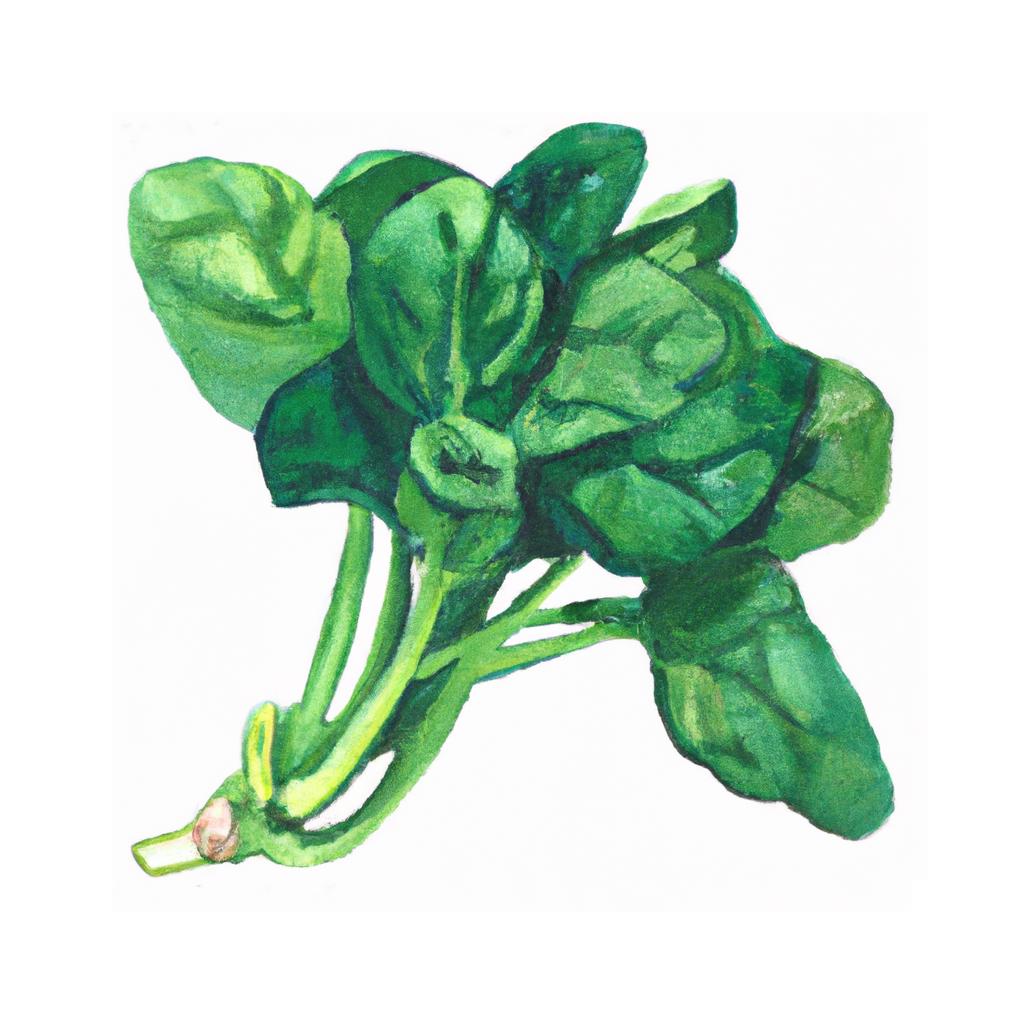
Spinach (Spinacia oleracea) is a leafy green vegetable originating from ancient Persia, believed to have been cultivated around 2,000 years ago. It rapidly gained popularity during the Middle Ages, eventually becoming a staple in various Mediterranean and European cuisines. Rich in nutrients, including vitamins A, C, K, and E, as well as calcium, iron, and numerous antioxidants, spinach is both delicious and beneficial for one's health.
There are three main types of spinach that are commonly grown: savoy, semi-savoy, and flat-leafed. Savoy spinach has dark green, crinkled leaves, while semi-savoy has slightly smoother leaves. Flat-leafed spinach is more commonly found in grocery stores due to its ease of cleaning and longer shelf life. Each type boasts subtly different flavors and textures, making them suitable for a variety of dishes.
Spinach is an extremely versatile vegetable that can be eaten raw or cooked. It goes well with various types of cuisine and can be incorporated into salads, smoothies, pasta dishes, soups, and even quiches. One popular dish featuring spinach is the Greek dish spanakopita, which consists of chopped spinach, feta cheese, and onions wrapped in a flaky pastry. When it comes to pairing, spinach complements other vegetables, such as tomatoes and mushrooms, and is an excellent addition to grain-based dishes like rice or quinoa.
When growing spinach in your garden, remember that it prefers cooler weather and can even survive light frosts. It is best to plant spinach seeds in early spring or late summer for optimal growth. Additionally, spinach requires well-draining soil that is rich in organic matter. Make sure to keep the soil consistently moist, but not waterlogged, to prevent the leaves from developing a bitter taste. Harvest the leaves when they are young and tender for the best flavor and nutrient content.
This is advice is most applicable to growers in the UK, you may need to adjust the timings if you live somewhere with a different climate and/or seasons.
| Month | Tasks | Advice |
|---|---|---|
| January | - | - |
| February | Sow seeds indoors, | Start sowing spinach seeds indoors to have transplants ready to plant out after the last frost. |
| March | Sow seeds outdoors, Plant out seedlings, | Sow spinach seeds directly outdoors in well-prepared soil, and transplant seedlings started in February. |
| April | - | - |
| May | Harvest leaves, | Begin harvesting spinach leaves when they are large enough to eat. Pick outer leaves to promote new growth and extend the harvest season. |
| June | Harvest leaves, | Continue harvesting spinach leaves throughout the month. Keep an eye on plants for signs of bolting as temperatures rise. |
| July | - | - |
| August | Sow seeds for autumn harvest, | Sow spinach seeds directly outdoors for autumn harvest. Choose a variety that is cold-tolerant for better results in cooler temperatures. |
| September | Harvest leaves, | Begin harvesting spinach leaves from the seeds sown in August. Remember to pick outer leaves to promote new growth. |
| October | Harvest leaves, | Continue harvesting spinach leaves throughout the month. Keep an eye on plants for signs of frost damage. |
| November | - | - |
| December | - | - |